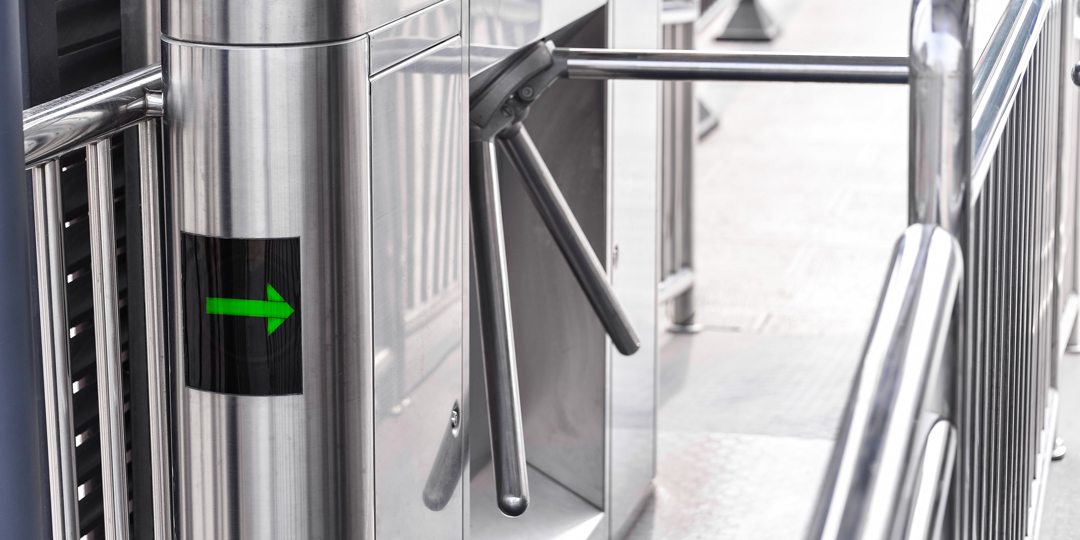Trust No One – Rethinking Access Control
Increasing security requirements for companies necessitate modern access control systems. They are an essential component of a security concept and provide comprehensive physical protection when needed, in line with the "Zero-Trust" principle.

Securing critical business processes has been a growing priority for companies across various industries for years. At the same time, the demands for cybersecurity in information systems are rising due to increased connectivity and mobile working, as well as the growing threat of cyberattacks. Access control systems are a crucial part of a security concept that helps companies meet these challenges and threats.
Nine out of ten companies fell victim to data theft, espionage, and sabotage last year. This causes annual damages of 203 billion euros to the German economy, according to a recent study by the industry association Bitkom from August 2022. Especially companies that are part of critical infrastructure expect a continued high threat from cyberattacks in the coming months. In early 2022, the government responded by expanding and tightening the circle of companies under the BSI-KRITIS regulation KRITIS-V, particularly for the energy, transport, and traffic sectors.
“Zero-Trust” Replaces Classic Security Concepts
IT security officers are increasingly relying on the “Zero-Trust” concept to secure their corporate networks. This approach secures IT systems by not trusting any accessing device, whether outside or inside a company, by default. Each user’s access is individually authenticated, and the identity and integrity of the device are continuously checked. This security concept gains relevance, especially in times of hybrid work models. Reserve proxies, firewalls, spam filters, antivirus programs, and encryption are just some of the tools IT managers use to protect corporate infrastructure from harm. Company protection also involves the physical security of tangible and intangible assets. To effectively implement a Zero-Trust concept, all aspects should be considered in a security concept, not just the protection of corporate networks. The concept defines who, when, where, why, and how access to data is granted and what can be done with that data. This includes regular training for employees on the responsible handling of company data. A modern access management system addresses this need by combining access control with identity management. Access control systems, along with access and access control mechanisms in IT environments like data centers and server rooms, are part of the IT baseline protection within an effective information security system (ISMS). Extensive protective mechanisms are available to security officers, including biometric access readers, room zone controls, and segregation systems for particularly sensitive access points.
Central and Automated Access Rights
However, the higher the security requirements for buildings and premises to be secured, the more complex these requirements become for an access control system. The risk increases with rising employee turnover, many visitor flows, and external companies performing activities on the premises. A solution that can meet these high security requirements is the access control system IF-6040 from Interflex Datensysteme GmbH. The software includes modules for access control, time management, and visitor management and can be used as both on-premises and cloud-based managed services. With the software solution, access rights can be centrally managed and automatically controlled. IT security officers can quickly and systematically overview the frequency of access at all access points. Access rights can also be managed globally and across locations, for example, through a comprehensive user/role permission concept. Since these can be dynamically assigned in the system solution, managing potentially thousands of access rights is simplified. Rights are not directly assigned to a person but indirectly to an organizational unit within a company. Security officers and IT departments are relieved by the automated and dynamic assignment and control of permissions, allowing them to focus on other important IT security tasks. An access solution like the IF-6040 offers even more possibilities, such as organizing entrance permits, access repeat blocking, two-person access verification, elevator or lock control, or time-dependent locking of individual doors. Security officers can use defined room zones to track access movements in particularly sensitive company areas or as a basis for comprehensive evacuation management. The solution can also be flexibly extended via the OpenAPI REST if company security requirements change.
Security as a Holistic Approach
The key to modern access control systems is the encryption of all communication channels and the ability to quickly and easily apply security updates, ensuring the software is always up-to-date. Access control systems should follow the principles of “Security-by-Default” and “Security-by-Design,” meaning that essential security aspects, such as the use of encryption technologies and authentication measures, are considered during development and throughout the entire lifecycle of the software and hardware. The IF-6040 system adheres to these principles, particularly in locking environments with wireless connections. Last year, Interflex introduced the Opendor air, a battery-powered, wireless series of locking components. This example shows that even in the event of an interrupted radio connection, such as during a blackout, autonomous operation is possible, and access bookings at the door can still be performed because the locking component stores the last 1,000 authorized bookings.
Security as a Snapshot
Ultimately, access control as part of modern corporate infrastructure is about more than just access verification. Security systems like the IF-6040 show that it also involves optimizing organizational and technical company processes and alleviating important IT tasks. IT security officers should consider all levels and components when securing corporate infrastructure internally and externally. This ensures physical protection in line with a Zero-Trust model. However, security is not a static state but always a snapshot. Continuous threat assessment and development of all security measures are necessary to build a successful shield against cyberattacks now and in the future.